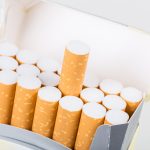
For the first time in a decade, the U.S. Environmental Protection Agency has proposed strengthening standards on fine soot in the air, a known contributor to serious health issues. Under the new proposal, standards for fine particulate pollution, known as PM 2.5, would change from a level of 12 micrograms per cubic meter to a level between nine and 10 micrograms per cubic meter. The standards haven’t been altered since 2012. The EPA estimates that with a standard of 9 micrograms per cubic meter, there would be up to 4,200 fewer premature deaths a year, 270,000 fewer lost workdays and as much as $43 billion in net health benefits in 2032. The agency will take comment on the full range of recommendations on soot standards included in the latest report from the Clean Air Scientific Advisory Committee, which is between eight and 11 micrograms per cubic meter. These fine pollution particles can penetrate deep into the lungs, triggering asthma attacks, heart attacks and premature death. Children, older adults, those with heart and lung conditions, and minority communities are most affected, the EPA said. “Our work to deliver clean, breathable air for everyone is a top priority at EPA, and this proposal will help ensure that all communities, especially the most vulnerable among us, are protected from exposure to harmful pollution,” EPA Administrator Michael Regan said… read on > read on >
























-300x200.jpg)













